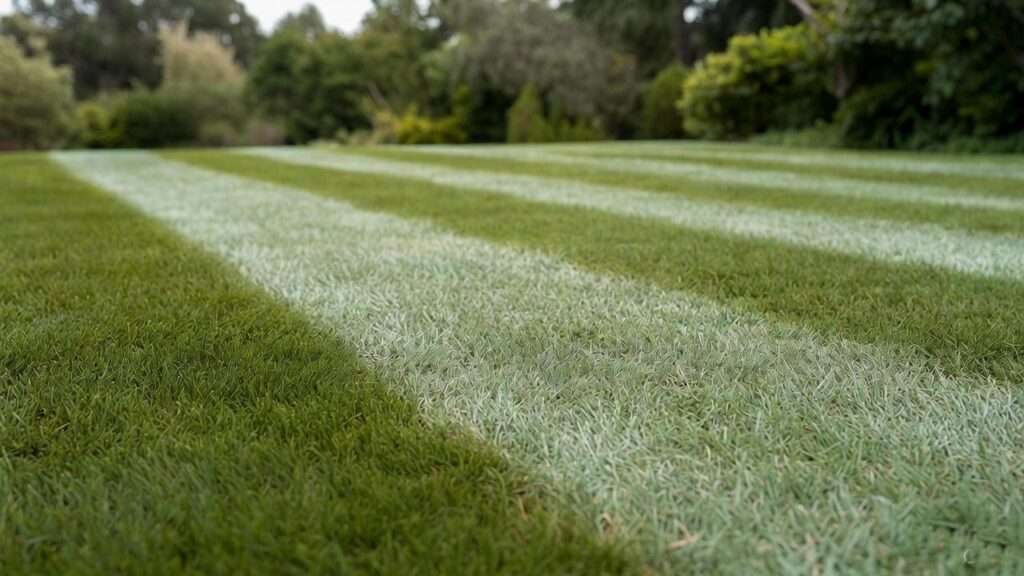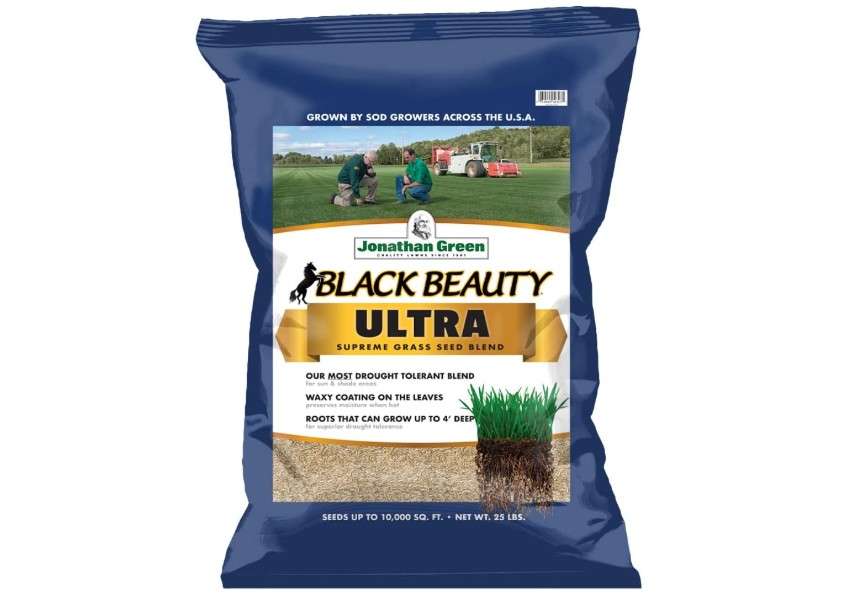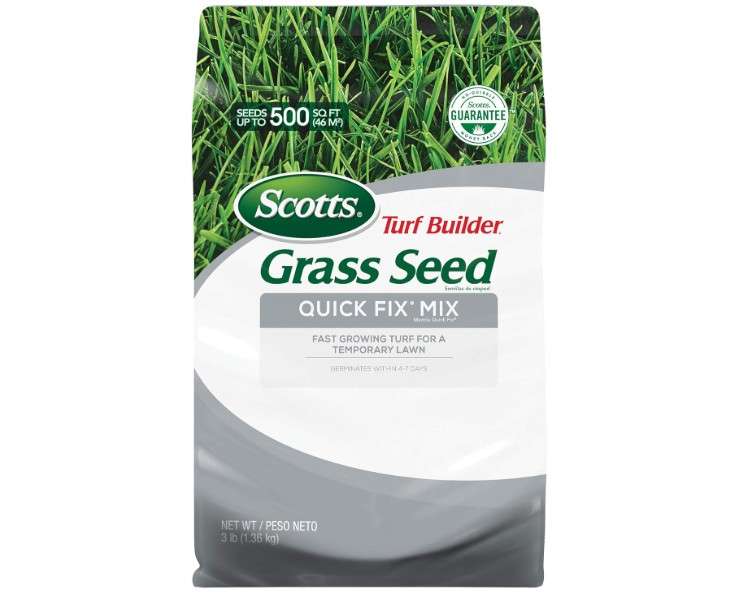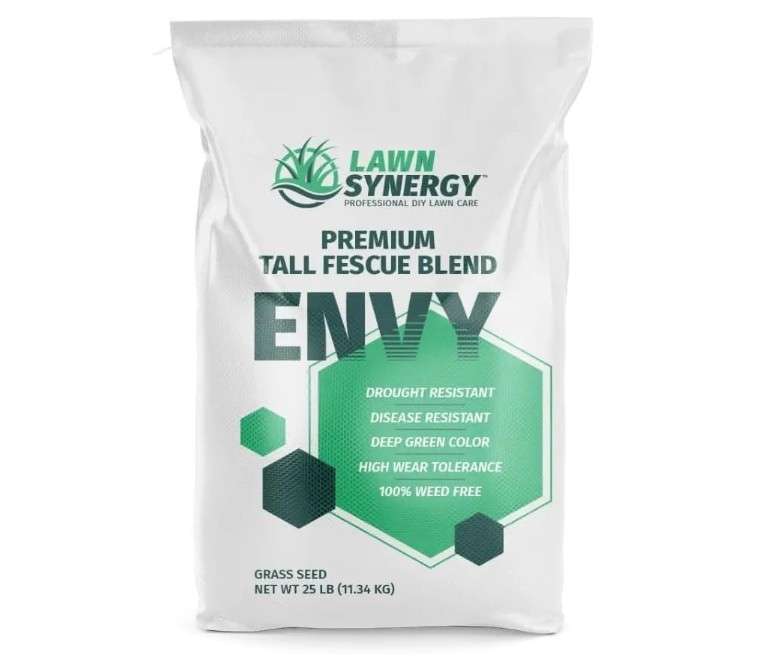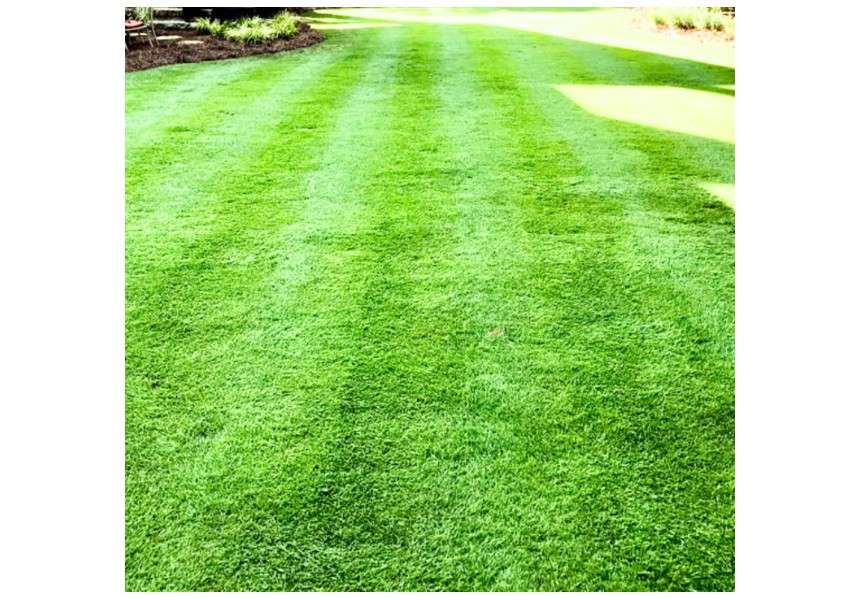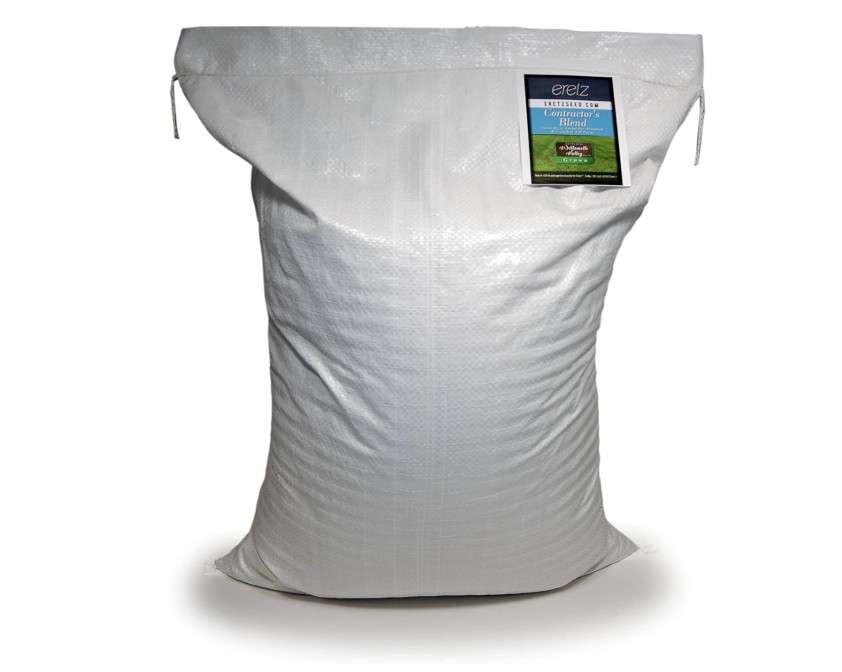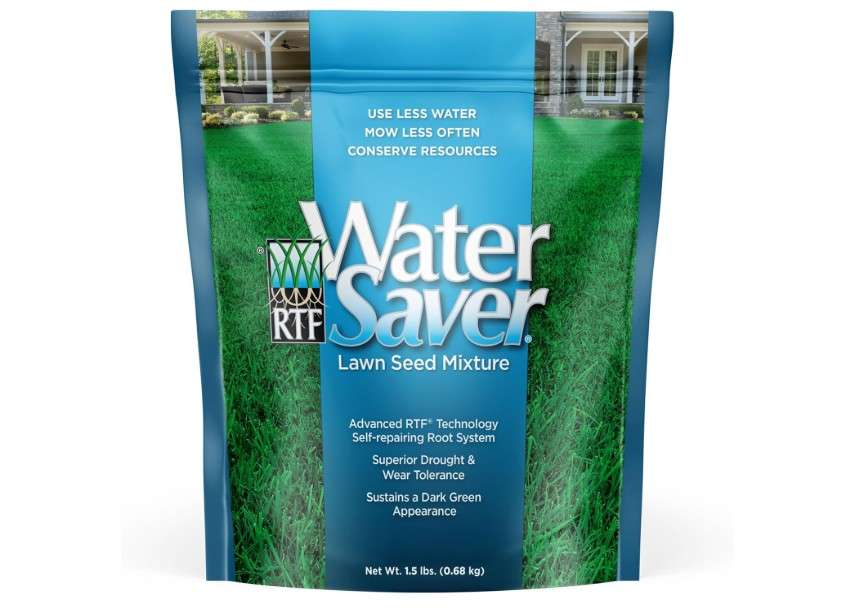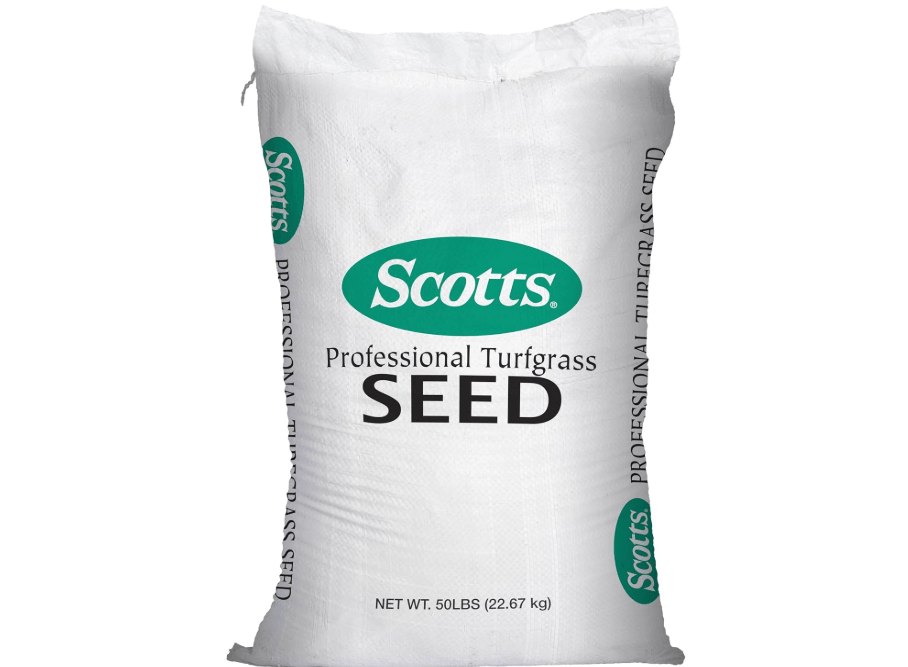You spend hours mowing, you invest in a high-quality striping kit, and you still can’t achieve that deep, mesmerizing, stadium-quality lawn stripe. It’s frustrating when your neighbors’ lawns look perfectly manicured while yours looks… flat. The common mistake? Focusing only on the equipment.
The secret to those picture-perfect alternating dark and light bands isn’t just about bending the grass; it’s about choosing the right foundation: the grass itself. Certain species and specific cultivars possess the necessary blade pliability, density, and color to hold a stripe for days. This expert-level guide cuts through the confusion, revealing the best 10 grass for stripes that groundskeepers rely on and helping you make an informed decision, regardless of your climate or budget.
B. Quick Comparison: Our Top 3 Picks for Maximum Contrast
The decision to stripe is often a commitment to a premium aesthetic. This table compares the top performers that deliver on that promise:
| Product Name | Best Feature for Striping | Climate Suitability |
| 🏆 Best Overall Striper: Jonathan Green Black Beauty Ultra | Superior density & deep color | Cool/Transition |
| 🏃 Fastest Striping/Quickest Germination: Scotts Turf Builder QuickFix | Rapid establishment and stiff blades | Cool/Transition |
| 💪 Most Durable/High-Traffic: Pennington Elite Tall Fescue | Deep roots and drought resistance | Transition/Cool |
II. Detailed Reviews: The Best 10 Grass for Stripes (H2)
1. Jonathan Green Black Beauty Ultra – The Gold Standard Kentucky Bluegrass Blend
- Compelling Product Description: This elite seed blend (a mix of Kentucky Bluegrass, Tall Fescue, and Perennial Ryegrass) is engineered to produce a turf resembling the rich, dark-green color of the Black Beauty series. The inclusion of premium Kentucky Bluegrass cultivars ensures superior density and pliability—two critical factors for professional-level striping and retention.
- Price: $105.35
- Key Features & Benefits:
- Dark Pigmentation: Cultivars selected for a genetically dark color, maximizing the contrast between light-reflecting and shadowed stripes.
- Waxy Coating: Blades possess a waxy cuticle, enhancing durability and giving them the firmness needed to hold the bend from the roller.
- Self-Repairing: Kentucky Bluegrass rhizomes ensure the turf heals quickly and maintains high density.
- Pros & Cons:
- Pros: Unbeatable stripe retention, self-repairing, outstanding winter hardiness, superior color contrast.
- Cons: Slowest germination time (up to 30 days for KBG), requires consistent nitrogen/fertilizer to maintain peak color.
- Amazon Customer Data: 4.6/5 Stars (12,000+ Ratings)
- Why It’s a Good Choice: The most pliable blades that consistently stay bent for days, delivering a truly luxurious, golf-course look.
- Ideal Use Case: Cool-season lawns, users committed to high-effort, professional lawn maintenance who prioritize the deepest possible color and stripe.
2. Scotts Turf Builder QuickFix – Elite Perennial Ryegrass Mix
- Compelling Product Description: Scotts designed this mix for those who need rapid results without sacrificing quality. Perennial Ryegrass is notorious for its quick germination speed, making it an ideal choice for overseeding thinning turf or establishing a brand-new lawn with instant curb appeal.
- Price:
- Key Features & Benefits:
- Fastest Germination: Visible grass sprouts in as little as 5–10 days, allowing for fast striping practice.
- High Shoot Density: Grows thick and upright, providing the necessary mass to create defined light reflection angles.
- Durability: Highly durable against heavy foot traffic, pets, and children.
- Pros & Cons:
- Pros: Quickest stripes available, highly durable, germinates well in cool soil, excellent for emergency repairs.
- Cons: Not self-repairing (no rhizomes/stolons), less heat and drought-tolerant than fescue varieties.
- Amazon Customer Data: 4.4/5 Stars (9,500+ Ratings)
- Why It’s a Good Choice: Best choice for getting immediate, crisp stripes, especially in the early season, and for fixing large bare spots quickly.
- Ideal Use Case: Quick-fix overseeding projects, homeowners in high-traffic cool/transition zones who prioritize speed and resilience.
3. Pennington Elite Tall Fescue – Durable Turf Type
- Compelling Product Description: Pennington’s Elite Tall Fescue blend focuses on resilience, utilizing the latest Turf Type Tall Fescue (TTTF) cultivars. TTTF features a finer blade than older Fescue, offering the deep-rooting drought benefits without sacrificing striping potential. This is the workhorse of striping grass.
- Price:
- Key Features & Benefits:
- Superior Drought & Heat Tolerance: Deep roots (up to 2 feet) allow it to thrive where other cool-season grasses fail in the summer.
- Finer Blade Cultivars: Modern breeding has reduced the blade width, improving pliability compared to traditional Tall Fescue.
- Tolerant of Wide Conditions: Excels in transition zones where temperatures swing wildly.
- Pros & Cons:
- Pros: Excellent heat tolerance, low water needs, very tough and resilient, superior disease resistance.
- Cons: Stripes can be slightly less defined than KBG, tends to clump if not overseeded regularly.
- Amazon Customer Data: 4.5/5 Stars (1,800+ Ratings)
- Why It’s a Good Choice: Combines superior durability with good striping capability for tough yards or transition zone areas prone to summer drought.
- Ideal Use Case: Transition zones, high-traffic family yards, or any area where summer heat and reduced watering are concerns.
4. GCI Turf Cool Blue Mix – Shade & Stripe Fine Fescue Blend
- Compelling Product Description: A specialized blend of Creeping Red and Chewings Fine Fescue, strategically mixed with a small amount of KBG. Fine Fescues have a very thin, wispy blade that bends easily and reflects light well, making them ideal for striping in areas with low sunlight exposure.
- Price: $96.99
- Key Features & Benefits:
- Exceptional Shade Tolerance: Thrives with as little as four hours of direct sun per day.
- Fine Blades: The naturally thin texture of the blades makes them incredibly pliable, holding the bent position for long-lasting stripes.
- Low Maintenance: Requires minimal fertilizer and less water once established.
- Pros & Cons:
- Pros: Thrives in deep shade, excellent color, very low maintenance needs, superb striping ability in low-light areas.
- Cons: Does not handle heavy foot traffic well, slow to repair damage if compacted.
- Amazon Customer Data: 4.7/5 Stars (750+ Ratings)
- Why It’s a Good Choice: Delivers professional striping results in challenging, shaded parts of the yard where other top contenders fail.
- Ideal Use Case: Highly shaded lawns, ornamental areas with minimal traffic, or around dense tree canopies.
5. Outsidepride Elite Blackout Blend – Professional Dark Color Mix
- Compelling Product Description: This seed mix is a secret weapon for groundskeepers seeking maximum color contrast. It consists of genetically dark-green, elite-rated cultivars of Tall Fescue and Kentucky Bluegrass that absorb more light, resulting in a turf that appears nearly black-green. This depth of color dramatically enhances the contrast in striped patterns.
- Price: $59.99
- Key Features & Benefits:
- Extreme Dark Color: Specialized pigment traits ensure the shadowed strips appear black and the light strips shine brightly.
- Excellent Density: Forms a tight, weed-resistant canopy.
- Wide Adaptability: Performs well across cool and transition climates.
- Pros & Cons:
- Pros: The darkest green color profile on the market, creating the most intense stripe contrast, good durability.
- Cons: Can be slow to germinate due to high KBG content, premium cost.
- Amazon Customer Data: 4.5/5 Stars (900+ Ratings)
- Why It’s a Good Choice: If your only goal is maximum visual contrast and neighbor envy, this high-pigment mix is the answer.
- Ideal Use Case: Homeowners prioritizing the darkest possible green and highest stripe contrast; ornamental front lawns.
6. Zenith Zoysiagrass – Warm-Season Zoysia
- Compelling Product Description: While cool-season grasses are the striping champions, Zoysia is the top choice for warm-weather striping. Zenith is a popular Zoysia cultivar known for its fine-to-medium blade texture and incredibly dense, lateral growth (stolons and rhizomes). This density creates the “carpet effect” that, when combined with a heavy roller, yields surprisingly good stripes for a warm-season grass.
- Price: $19.99
- Key Features & Benefits:
- Extreme Density: The dense growth habit creates a solid surface for light reflection.
- Drought Resistance: Highly tolerant of heat and dry conditions once established.
- Finer Warm-Season Blade: One of the finest-bladed warm-season grasses available, maximizing pliability.
- Pros & Cons:
- Pros: Top striper for the South, excellent heat tolerance, chokes out weeds naturally due to density.
- Cons: Long establishment time, must be purchased as sod or plugs (seed is rare/expensive), requires yearly scalping and dethatching.
- Amazon Customer Data: 4.3/5 Stars (400+ Plugs/Sod Reviews)
- Why It’s a Good Choice: The only reliable way to achieve moderate-to-good stripes in the deep Southern/Warm-Season climate zones.
- Ideal Use Case: Warm Southern or coastal regions (Florida, Texas, Gulf Coast) needing a high-end, heat-tolerant lawn.
7. Earthgro Contractor Grade – Budget-Friendly Seed Mix
- Compelling Product Description: Designed for covering large areas where budget is the primary concern, this mix typically contains a higher ratio of Annual and Perennial Ryegrass and common Tall Fescue. While not the most elite cultivars, the high percentage of Ryegrass still ensures rapid germination and decent striping potential immediately after mowing.
- Price:$116.99
- Key Features & Benefits:
- High Value per Pound: Excellent cost-efficiency for large coverage areas.
- Quick Cover: Rapid germination provides soil stabilization and quick visual cover.
- Temporary Stripes: Perennial Ryegrass component allows for temporary striping patterns.
- Pros & Cons:
- Pros: Extremely affordable, very fast growth, good for temporary fixes or massive overseeding projects.
- Cons: Lower-quality cultivars, less durability, stripes fade quickly, may not survive harsh winters.
- Amazon Customer Data: 4.2/5 Stars (15,000+ Ratings)
- Why It’s a Good Choice: When you need the look of stripes but your entire yard is the project—it’s the low-risk entry point to testing striping in your area.
- Ideal Use Case: Covering large acreage where cost is the primary factor, temporary ground cover, or quick stabilization on new construction.
8. WaterSaver TTTF Blend – Drought-Tolerant Tall Fescue Cultivar
- Compelling Product Description: A specialized blend of drought-resistant Tall Fescue cultivars that often incorporate a non-fescue component (like a coated seed or proprietary bio-stimulant) to reduce water needs. This is critical for striping enthusiasts in regions with increasingly strict water restrictions.
- Price: $18.95
- Key Features & Benefits:
- Hydro-Retention: Contains technology or cultivars that maximize water retention in the root zone.
- Deep-Rooting: Maintains the robust, deep-root system inherent to Tall Fescue.
- Mowing Height Resilience: Remains healthier and greener when cut at striping heights (3.5–4 inches).
- Pros & Cons:
- Pros: Thrives with minimal irrigation, retains color in extreme heat, environmentally friendly.
- Cons: Requires deep, infrequent watering cycles to develop the drought resistance, can be pricey.
- Amazon Customer Data: 4.6/5 Stars (1,100+ Ratings)
- Why It’s a Good Choice: Allows you to maintain a healthy, stripe-able lawn through long, hot, dry summers where other cool-season grasses would brown out.
- Ideal Use Case: Western US, areas facing water restrictions, or homeowners dedicated to minimal irrigation.
9. Scotts Sun & Shade Mix – Versatile All-Condition Mix
- Compelling Product Description: This is a well-balanced, high-ratio mix of Kentucky Bluegrass, Perennial Ryegrass, and Fine Fescues, specifically formulated to perform reliably under varying conditions. It’s the ultimate general-purpose seed for yards with both full sun and deep shade microclimates, ensuring a uniform, stripe-able look across the entire property.
- Price: $169.99
- Key Features & Benefits:
- Broad Adaptability: Contains species that thrive in both high light (KBG) and low light (Fine Fescue).
- Self-Repairing: Includes KBG for repair and density.
- Easy to Use: Coated seeds help retain moisture and improve germination success.
- Pros & Cons:
- Pros: Highly versatile, simplifies overseeding complex yards, reliably stripes.
- Cons: Performance is often average in extreme conditions (not best for deep shade or best for full sun).
- Amazon Customer Data: 4.5/5 Stars (22,000+ Ratings)
- Why It’s a Good Choice: Solves the common problem of yard inconsistency, allowing you to have stripes across the entire property, regardless of light conditions.
- Ideal Use Case: Yards with multiple microclimates (sun and shade areas), or for first-time DIYers who need a reliable, forgiving blend.
10. Creeper Low-Mow Fescue – Low-Mow Fine Fescue Variety
- Compelling Product Description: This blend utilizes dense-growing Fine Fescues that have been cultivated to tolerate shorter mowing heights while maintaining the necessary pliability for striping. It is ideal for homeowners who want a tidy, well-defined turf without having to constantly cut at the maximum 4-inch height.
- Price:
- Key Features & Benefits:
- Height Tolerance: Can be maintained reliably at 2.5–3 inches while retaining striping ability.
- Creeping Habit: Fine Fescues creep to fill in minor gaps, increasing density.
- Less Thatch: Naturally produces less thatch than other high-maintenance grasses.
- Pros & Cons:
- Pros: Requires less mowing, retains stripes well at moderate heights, fine texture.
- Cons: Not as durable as Tall Fescue, can become patchy under heavy stress.
- Amazon Customer Data: 4.3/5 Stars (800+ Ratings)
- Why It’s a Good Choice: For the homeowner who wants the striping effect but prefers the look and maintenance schedule of a slightly shorter, more manicured lawn.
- Ideal Use Case: Ornamental lawns, areas with frequent mowing schedules, or users preferring a shorter blade length.
III. The Expert’s Buying Guide: Choosing Your Perfect Stripe (H2)
Choosing the right grass is a blend of science and climate. Use this guide to determine which of the best 10 grass for stripes will work hardest for your specific lawn conditions.
A. Stripe Science 101: Why Pliability Matters (H3)
Lawn stripes are an illusion created by light. When the grass blades are pressed away from you, they reflect less light, appearing dark. When they are pressed toward you, they reflect more light, appearing bright. To make this illusion last, you need three things:
- The Mowing Height Rule: Taller grass blades reflect more light and bend more easily. Always cut your grass at the highest recommended height (typically 3–4 inches for cool-season varieties) to maximize the surface area that bends. Shorter grass is too stiff.
- The Blade Texture Factor: Fine-bladed cool-season grasses (Kentucky Bluegrass, Perennial Ryegrass, Fine Fescue) naturally outperform wide, stiff warm-season varieties because they are more flexible and easier to manipulate with a roller.
- Density is Contrast: The denser the turf (a feature of high-quality Kentucky Bluegrass or Zoysia), the greater the mass of blades bending, which means the line separation and contrast will be much clearer and more dramatic.
B. Cool vs. Warm: Matching Grass to Your Climate Zone (H3)
Your geographic location is the single most important factor. Never buy a cool-season grass for a consistently warm climate, or vice versa.
| Climate Zone | Best Striping Grasses | Striping Capability |
| Cool-Season Zones (North): | Kentucky Bluegrass (KBG), Perennial Ryegrass, Tall Fescue | Excellent |
| Warm-Season Zones (South): | Zoysiagrass, Bermuda (Requires specialized varieties) | Moderate |
| Transition Zones: | Tall Fescue (TTTF), KBG/Rye mixes | Very Good |
C. Mower Setup: The Essential Partner to Your Seed (H3)
Even the best 10 grass for stripes will fail to produce visible patterns if you don’t use the right tools.
- Roller or Striping Kit: This is non-negotiable. You need a weighted cylinder attached to the back of your mower to physically bend the grass blades in the desired direction.
- Sharp Blades: A dull blade tears the grass, leaving a ragged white or brown edge that reduces the deep green color needed for contrast. Sharpen your blades every 8–10 hours of use for a clean, sharp cut.
- Mow Dry: Never attempt to stripe a wet lawn. Wet grass mats down and can create permanent damage, reducing stripe definition.
IV. Final Verdict & Our Top Recommendation (H2)
We analyzed the best 10 grass for stripes based on density, color, pliability, and consumer satisfaction. Here is a quick decision guide to help you make your final choice:
| Decision Factor | Top Pick Recommendation | Why It Wins |
| Best for High Contrast | Jonathan Green Black Beauty Ultra | Deepest color and highest blade pliability for dramatic contrast. |
| Best for Durability/Traffic | Pennington Elite Tall Fescue | Deepest roots make it resistant to drought and heavy use. |
| Best for Warm Climates | Zenith Zoysiagrass | The only reliable choice for achieving striping aesthetics in the South. |
| Best for Beginners/Fast Results | Scotts Turf Builder QuickFix | Fastest germination, providing instant satisfaction and quick establishment. |
Final Call: The Investment is Worth the View
If you live in a cool or transition zone and want the absolute gold standard—the blend that will transform your yard into a centerpiece—we recommend the Jonathan Green Black Beauty Ultra. Its combination of elite KBG and high-pigment fescue creates turf density and blade characteristics that simply cannot be matched for stripe retention and contrast.
Call to Action
Don’t wait—click here to start transforming your lawn into the envy of the neighborhood!
V. Frequently Asked Questions (FAQ) (H2)
Q: Can I stripe my warm-season grass (e.g., St. Augustine)? (H3)
- A: It is difficult. Warm-season grasses like St. Augustine have very wide, stiff blades that resist bending. While you can achieve a minimal effect, you must use a very heavy roller and mow at the highest setting. For the best warm-season results, look for fine-bladed Zoysiagrass cultivars.
Q: How often should I change my striping pattern? (H3)
- A: Every 1–2 weeks. Mowing the exact same pattern repeatedly causes the grass to lean permanently (known as “graining”), which can weaken the blades, cause thinning, and lead to soil compaction. Alternating directions helps the grass blades stand upright and remain healthy.
Q: Do I need a reel mower for perfect stripes? (H3)
- A: A reel mower provides the cleanest, most precise cut, which subtly improves overall turf health and appearance. However, a quality rotary mower fitted with a heavy-duty roller attachment will produce excellent, highly visible stripes on the right type of grass.
Q: What is the highest recommended mowing height for striping? (H3)
- A: Always mow at the highest healthy recommended height for your specific grass type (usually 3.5 to 4 inches for cool-season varieties). Taller blades have more surface area, bend more easily, and reflect more light, maximizing the visual contrast of your stripes.

